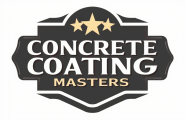Concrete Grinding
In Massachusetts, Rhode Island and Connecticut
Concrete grinding is an essential process to prepare a concrete floor to be coated with durable finishes like Polyurea, epoxy or urethane finishes.
Employing high-performance abrasive tools embedded with industrial-grade diamonds, this precise process serves to smooth out uneven or rough concrete surfaces. Typically, grinding is utilized to prepare floors for subsequent coatings such as epoxy, sealants, or overlays, and is highly effective for the removal of old adhesives, paint, or persistent stains.
Concrete grinding can be executed in two primary ways: wet or dry, each with its own advantages depending on the job's requirements. In wet grinding, water is used to cool the diamond tools, suppress dust, and lubricate the surface, which is ideal for larger projects or indoor environments where airborne particles could pose a health risk. This method helps prevent the tools from overheating and ensures a smoother finish, but it does require additional cleanup to manage the slurry that's created. On the other hand, dry grinding employs vacuum systems to capture dust immediately, making it more suitable for outdoor or well-ventilated spaces. It's faster and less messy but demands high-quality dust extraction equipment to comply with safety regulations.
The grinding process itself is graded—starting with coarse grit diamonds that aggressively remove material and imperfections, followed by progressively finer grits for a smoother, polished finish. For smaller jobs or hard-to-reach areas, handheld angle grinders may be employed. Larger-scale projects demand the use of industrial-grade floor grinding machines, which deliver both efficiency and consistency across expansive surfaces.
Of course, success in concrete grinding hinges on using the right tools and prioritizing safety—something we always emphasize on our job sites. For smaller, precision tasks, a handheld angle grinder with diamond discs is lightweight, maneuverable, and perfect for spot repairs or edges. However, for expansive areas like factory floors or driveways, we use larger, walk-behind or ride-on professional machines. These powerhouses, often equipped with planetary grinding heads, deliver consistent results over large surfaces and can be adjusted for different grit levels. Regardless of the scale, proper safety gear is non-negotiable: this includes respirators to protect against dust inhalation, eye protection, earplugs for noise reduction, and sturdy gloves and boots to guard against vibrations and potential hazards.
Before starting any grinding project, it's crucial to assess the concrete's condition—factors like age, moisture content, and existing coatings can influence the approach. We'll typically begin by cleaning the surface to remove loose debris, then select the appropriate grit based on the desired outcome. The actual grinding might take several passes, with each one refining the surface further, followed by edge detailing and, if needed, a final polishing step. After completion, proper curing and sealing are key to protecting the newly exposed surface from moisture, stains, and everyday wear.
